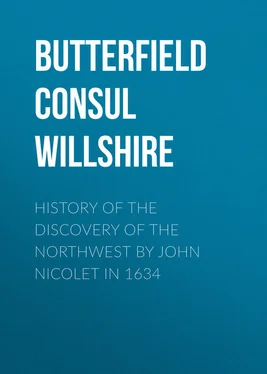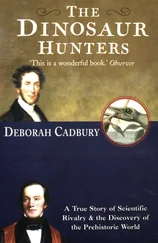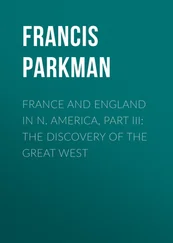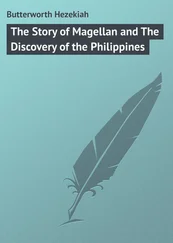Consul Butterfield - History of the Discovery of the Northwest by John Nicolet in 1634
Здесь есть возможность читать онлайн «Consul Butterfield - History of the Discovery of the Northwest by John Nicolet in 1634» — ознакомительный отрывок электронной книги совершенно бесплатно, а после прочтения отрывка купить полную версию. В некоторых случаях можно слушать аудио, скачать через торрент в формате fb2 и присутствует краткое содержание. ISBN: , Жанр: foreign_antique, foreign_prose, на английском языке. Описание произведения, (предисловие) а так же отзывы посетителей доступны на портале библиотеки ЛибКат.
- Название:History of the Discovery of the Northwest by John Nicolet in 1634
- Автор:
- Жанр:
- Год:неизвестен
- ISBN:http://www.gutenberg.org/ebooks/36698
- Рейтинг книги:5 / 5. Голосов: 1
-
Избранное:Добавить в избранное
- Отзывы:
-
Ваша оценка:
- 100
- 1
- 2
- 3
- 4
- 5
History of the Discovery of the Northwest by John Nicolet in 1634: краткое содержание, описание и аннотация
Предлагаем к чтению аннотацию, описание, краткое содержание или предисловие (зависит от того, что написал сам автор книги «History of the Discovery of the Northwest by John Nicolet in 1634»). Если вы не нашли необходимую информацию о книге — напишите в комментариях, мы постараемся отыскать её.
History of the Discovery of the Northwest by John Nicolet in 1634 — читать онлайн ознакомительный отрывок
Ниже представлен текст книги, разбитый по страницам. Система сохранения места последней прочитанной страницы, позволяет с удобством читать онлайн бесплатно книгу «History of the Discovery of the Northwest by John Nicolet in 1634», без необходимости каждый раз заново искать на чём Вы остановились. Поставьте закладку, и сможете в любой момент перейти на страницу, на которой закончили чтение.
Интервал:
Закладка:
History of the Discovery of the Northwest by John Nicolet in 1634 / With a Sketch of his Life
PREFACE
In the following pages, I have attempted to record, in a faithful manner, the indomitable perseverance and heroic bravery displayed by John Nicolet in an exploration which resulted in his being the first of civilized men to set foot upon any portion of the Northwest; that is, upon any part of the territory now constituting the States of Ohio, Indiana, Illinois, Michigan, and Wisconsin. It is shown how he brought to the knowledge of the world the existence of a "fresh-water sea" – Lake Michigan – beyond and to the westward of Lake Huron; how he visited a number of Indian nations before unheard of; how he penetrated many leagues beyond the utmost verge of previous discoveries, with an almost reckless fortitude, to bind distant tribes to French interests; and how he sought to find an ocean, which, it was believed, was not a great distance westward of the St. Lawrence, and which would prove a near route to China and Japan.
The principal sources from which I have drawn, in my investigations concerning the life and explorations of Nicolet, are the Jesuit Relations. So nearly contemporaneous are these publications with his discoveries – especially those which contain a record of them – and so trustworthy are they in their recital of facts connected therewith, that their value, in this connection, can hardly be over-estimated. Each one of the series having a particular bearing upon the subject of this narrative has been studied with a care commensurate with its importance. Other accounts of the same period, as well as of a somewhat later date, together with the researches of modern writers, concerning the daring Frenchman, whose name stands first on the list of the explorers of the Northwest, have, likewise, been carefully examined, the object being, if not to exhaust all known sources of information illustrative of these discoveries, at least to profit by them. Aid has been received, in addition, from several living authors, especially from Benjamin Sulte, Esq., of Ottawa, Canada, to whom, and to all others who have extended a helping hand, I return my sincere thanks.
C. W. B.
Madison, Wisconsin, 1881.
INTRODUCTION.
PRE-HISTORIC MAN IN THE NORTHWEST – THE RED RACE – FIRST DISCOVERIES IN NEW FRANCE
Of the existence, in what are now the States of Ohio, Indiana, Illinois, Michigan, and Wisconsin, at a remote period, of a race superior in intelligence to the red men who inhabited this region when first seen by a European, there are indubitable evidences. Who were these ancient occupiers of the territory just mentioned – of its prairies and woodlands, hills and valleys? There are no traditions of their power, of their labor, or of their wisdom – no record of their having lived, except in rapidly-decaying relics. They left no descendants to recount their daring deeds. All that remain of them – the so-called Mound-Builders – are mouldering skeletons. All that are to be seen of their handicraft are perishing earth-works and rude implements. These sum up the "types and shadows" of the pre-historic age.
There is nothing to connect "the dark backward and abysm" of mound-building times with those of the red race of the Northwest; and all that is known of the latter dating earlier than their first discovery, is exceedingly dim and shadowy. Upon the extended area bounded by Lake Superior on the north, Lake Michigan on the east, wide-spreading prairies on the south, and the Mississippi river on the west, there met and mingled two distinct Indian families – Algonquins and Dakotas. Concerning the various tribes of these families, nothing of importance could be gleaned by the earliest explorers; at least, very little has been preserved. Tradition, it is true, pointed to the Algonquins as having, at some remote period, migrated from the east; and this has been confirmed by a study of their language. It indicated, also, that the Dakotas, at a time far beyond the memory of the most aged, came from the west or southwest – fighting their way as they came; that one of their tribes 1 1 Ancestors of the present Winnebagoes.
once dwelt upon the shores of a sea; but when and for what purpose they left their home none could relate.
The residue of the Northwest was the dwelling-place of Algonquins alone. In reality, therefore, "the territory northwest of the river Ohio" has no veritable history ante-dating the period of its first discovery by civilized man. Portions of the country had been heard of, it is true, but only through vague reports of savages. There were no accounts at all, besides these, of the extensive region of the upper lakes or of the valley of the Upper Mississippi; while nothing whatever was known of the Ohio or of parts adjacent.
The first of the discoveries in the New World after that of Columbus, in 1492, having an immediate bearing upon this narrative, was that of John Cabot, in 1497. On the third of July, of that year, he saw what is now believed to have been the coast of Labrador. After sailing a short distance south, he probably discovered the island of Newfoundland. In 1498, his son, Sebastian, explored the continent from Labrador to Virginia, and possibly as far south as Florida. Gaspar Cortereal, in 1500, reached the shore seen by John Cabot, and explored it several hundred miles. He was followed, in 1524, by John Verrazzano, who discovered the North American coast in, probably, the latitude of what is now Wilmington, North Carolina. He continued his exploration to the northward as far as Newfoundland. To the region visited by him, he gave the name of New France. The attention of the reader is now directed to some of the most important events, in the country thus named, which followed, for a period of a hundred and ten years, the voyage of Verrazzano.
CHAPTER I.
EVENTS LEADING TO WESTERN EXPLORATION
The discovery of the river St. Lawrence, and of the great lakes which pour their superabundant waters through it into the gulf, was not the least in importance of the events which signalized the opening of the history of the New World. The credit of having first spread a sail upon the majestic stream of Canada, and of obtaining such information as afterward led to a knowledge of the whole of its valley, belongs to James Cartier, a native of St. Malo – a port in the north of France. Cartier was a skillful mariner. On the twentieth of April, 1534, he sailed from his native place, under orders of the French admiral, for the coast of Newfoundland, intent on exploring unknown seas, and countries washed by them. He took with him two ships of fifty tons each, and in twenty days saw the large island lying between the ocean and the river he was soon to discover. Favorable winds had wafted him and his hundred and twenty-two sailors and adventurers to inhospitable shores, but at an auspicious season of the year.
Having sailed nearly around Newfoundland, Cartier turned to the south, and, crossing the gulf, entered a bay, which he named Des Chaleurs, because of the midsummer heats. A little farther north he landed and took possession of the country in the name of the French king. His vessels were now at anchor in the smaller inlet of Gaspé. Sailing still further north, Cartier, in August, discovered the river St. Lawrence. He moved up its channel until land was sighted on either side; then, being unprepared to remain through the winter, he sailed back again to the gulf, crossed the ocean, and moored his vessels in safety in St. Malo. He made the return voyage in less than thirty days. This was, at that period, an astonishing achievement. The success of the expedition filled the whole of France with wonder. In less than five months, the Atlantic had been crossed; a large river discovered; a new country added to the dominions of France; and the ocean recrossed. All this had been accomplished before it was generally known that an expedition had been undertaken.
Читать дальшеИнтервал:
Закладка:
Похожие книги на «History of the Discovery of the Northwest by John Nicolet in 1634»
Представляем Вашему вниманию похожие книги на «History of the Discovery of the Northwest by John Nicolet in 1634» списком для выбора. Мы отобрали схожую по названию и смыслу литературу в надежде предоставить читателям больше вариантов отыскать новые, интересные, ещё непрочитанные произведения.
Обсуждение, отзывы о книге «History of the Discovery of the Northwest by John Nicolet in 1634» и просто собственные мнения читателей. Оставьте ваши комментарии, напишите, что Вы думаете о произведении, его смысле или главных героях. Укажите что конкретно понравилось, а что нет, и почему Вы так считаете.












